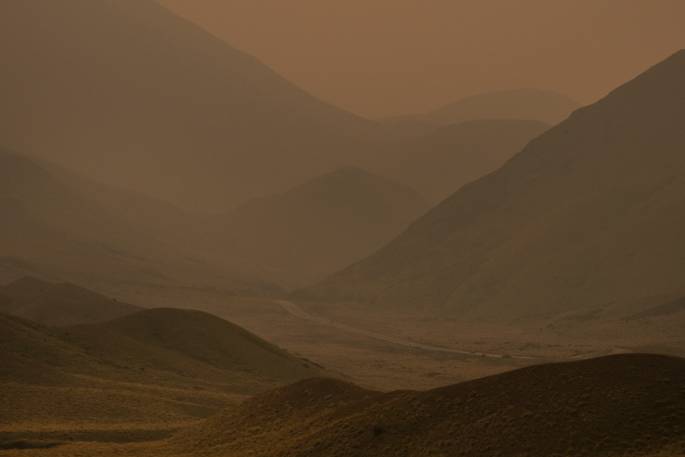Smoke from the devastating Australian wildfires impacted the atmosphere in a way that's never been seen before.
Scientists at NASA and New Zealand's National Institute of Water and Atmospheric Research have been studying the effects from the wildfire's smoke on our ozone.
They have detected unprecedented chemical changes in the stratosphere, roughly 16-20 km above the Earth's surface, which is where one third of our protective ozone layer resides.
The changes involved several chlorine-containing gases, which usually do not change much in this region.
The main differences involved hydrogen chloride - a gas that can be converted into a reactive form that destroys ozone.
In the months following the bushfires, NASA's Aura satellite observed that HCl levels had dropped by about half.
There were also increases in chlorine monoxide.
The changes occurred gradually over a four- to five-month period after the fires, before reversing over another four months.
Study lead Dr Susan Strahan is a Senior Research Scientist at the University of Maryland Baltimore County and the NASA Goddard Flight Center.
She says that this discovery revealed an important gap in our understanding of ozone chemistry.
"We were unable to replicate what we were seeing in any models, meaning that the reactions taking place in the stratosphere on these smoke aerosols are unknown.
"We don't know what they are, and we can't calculate their effects on ozone.
"This is worrying because anything that messes with the chlorine family of gases - like HCl - has the potential to harm the ozone.
"Just one atom of chlorine can destroy over 100,000 ozone molecules before it is removed from the atmosphere.
"From the observations of elevated chlorine monoxide, we think that ozone in the mid latitudes experienced some depletion following the 2020 fires."
Further measurements were taken by NIWA's Atmospheric Research Station at Lauder in Central Otago, located on New Zealand's South Island.
The station was perfectly placed to make the observations - New Zealand experienced apocalyptic orange skies and brown snow-peaked mountains as the smoke blew over the country, located some 2000km away from the fires.
NIWA Researcher Dan Smale is based at Lauder.
He says that the smoke offered a great chance to study the impact of massive wildfire events on the atmosphere.
"Nothing like this has ever been seen in the Lauder data record before. Like volcanic eruptions, mega wildfires release millions of tons of smoke particles high into the air.
"The Australian bushfires were the biggest and most destructive ever recorded and seem to have caused unknown reactions affecting ozone chemistry, which is both tantalising from a science point of view and worrying from an environmental point of view.
"Our findings identify a knowledge gap in the processes that control ozone. With wildfires predicted to become more frequent and intense as the planet warms, the likelihood of ozone depletion is increased. Laboratory studies on the chemical reactivity of wildfire smoke particles are urgently needed."
Infamously known as "Black Summer", the 2020 Australian wildfires burnt approximately 14.3 million hectares of land, destroying 3000 homes, and killing at least 34 people and up to 3 billion animals.
The paper is published in Geophysical Research Letters.



2 comments
Oh so ...
Posted on 15-08-2022 10:07 | By Kancho
So now we can angst about something else that we have no control on. Nor can we stop the sea rising or anything else with anything we do especially as an insignificant population. Similarly we won't affect other countries burning coal to ship us everything nor to curb the population growth of an already under resourced need for food, clean water or stop more expansion on consumerism . We can't even provide for NZ population needs
.
Posted on 15-08-2022 12:53 | By morepork
Isn't this Hydrochloric acid? (HCl). No wonder it is lethal on the ozone. Makes me wonder where this chlorine came from in the first place... Looks like there is nothing we can do about this. Maybe that will change as research continues.
Leave a Comment
You must be logged in to make a comment.